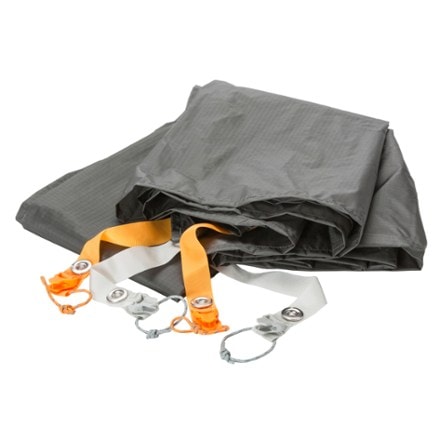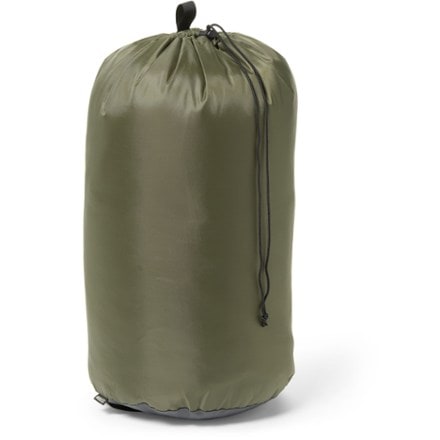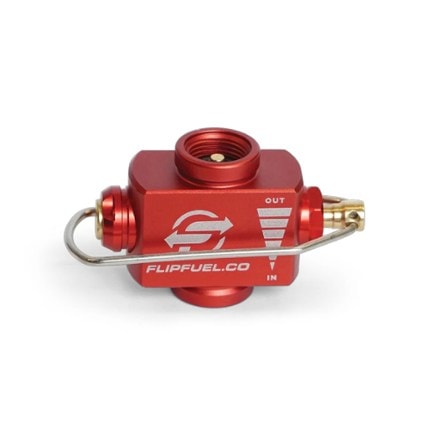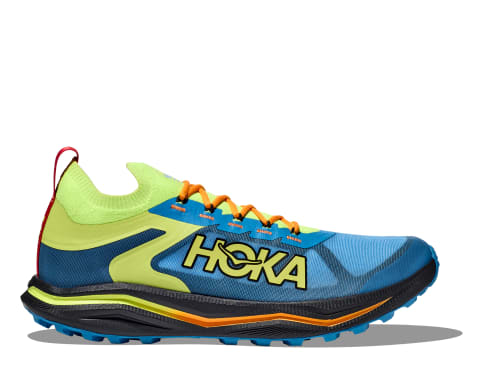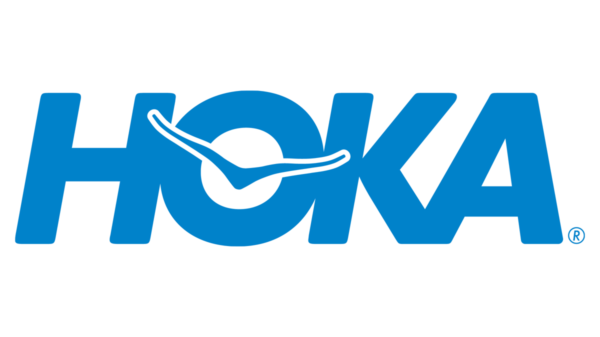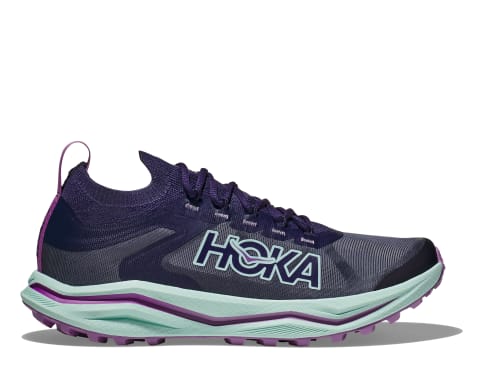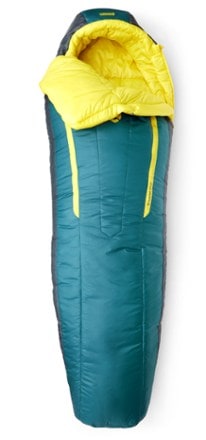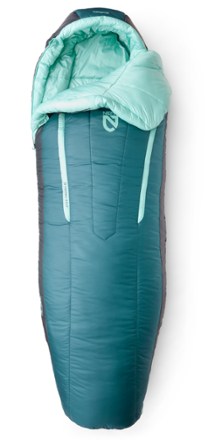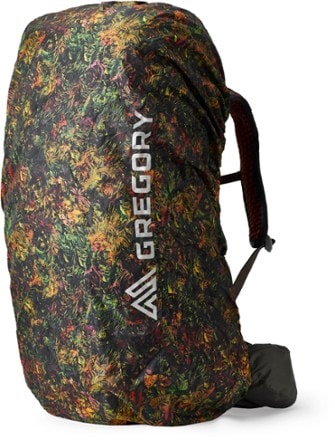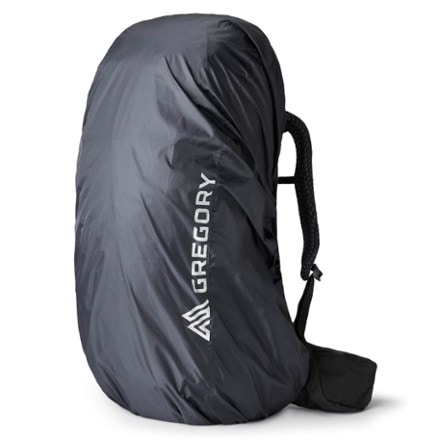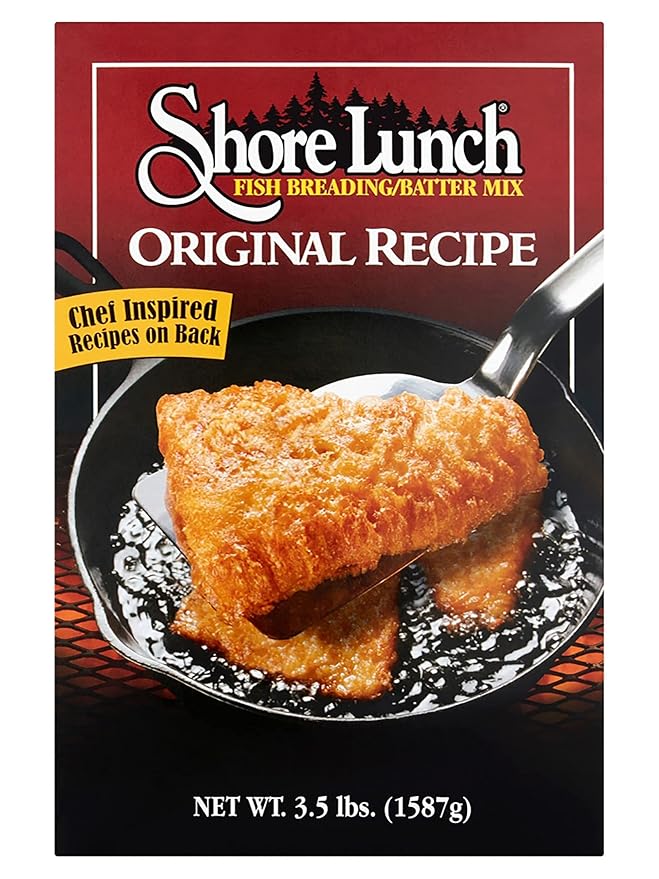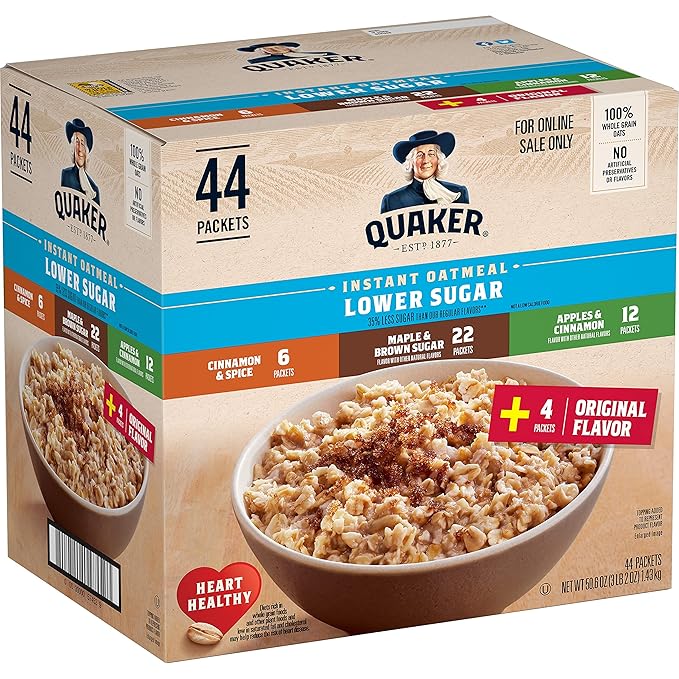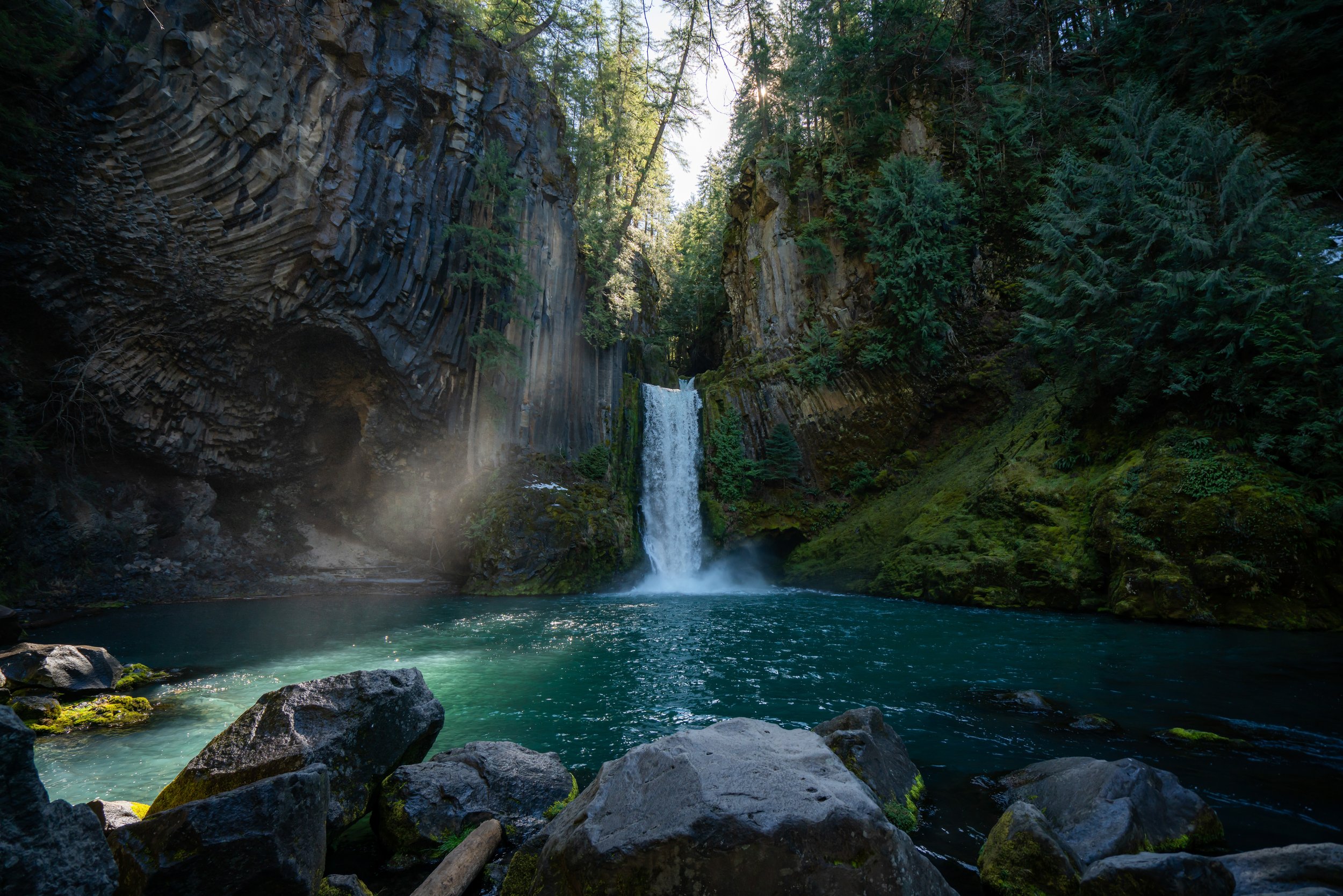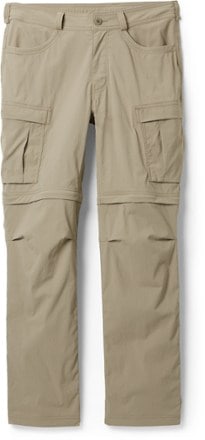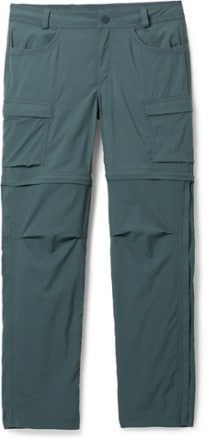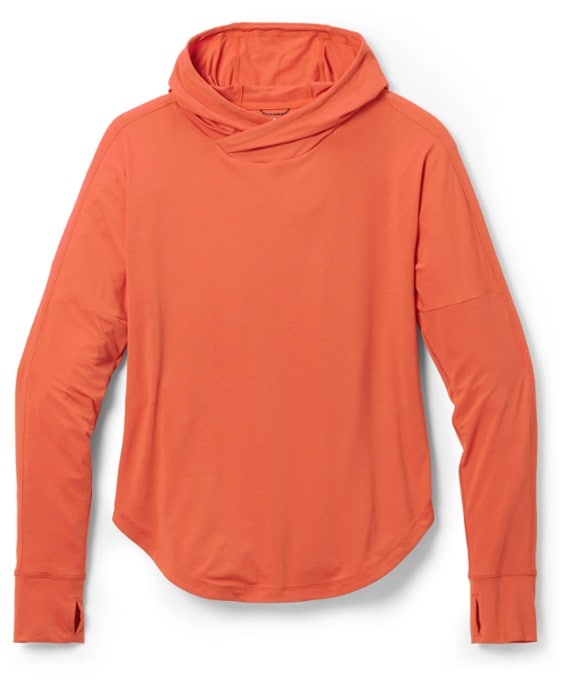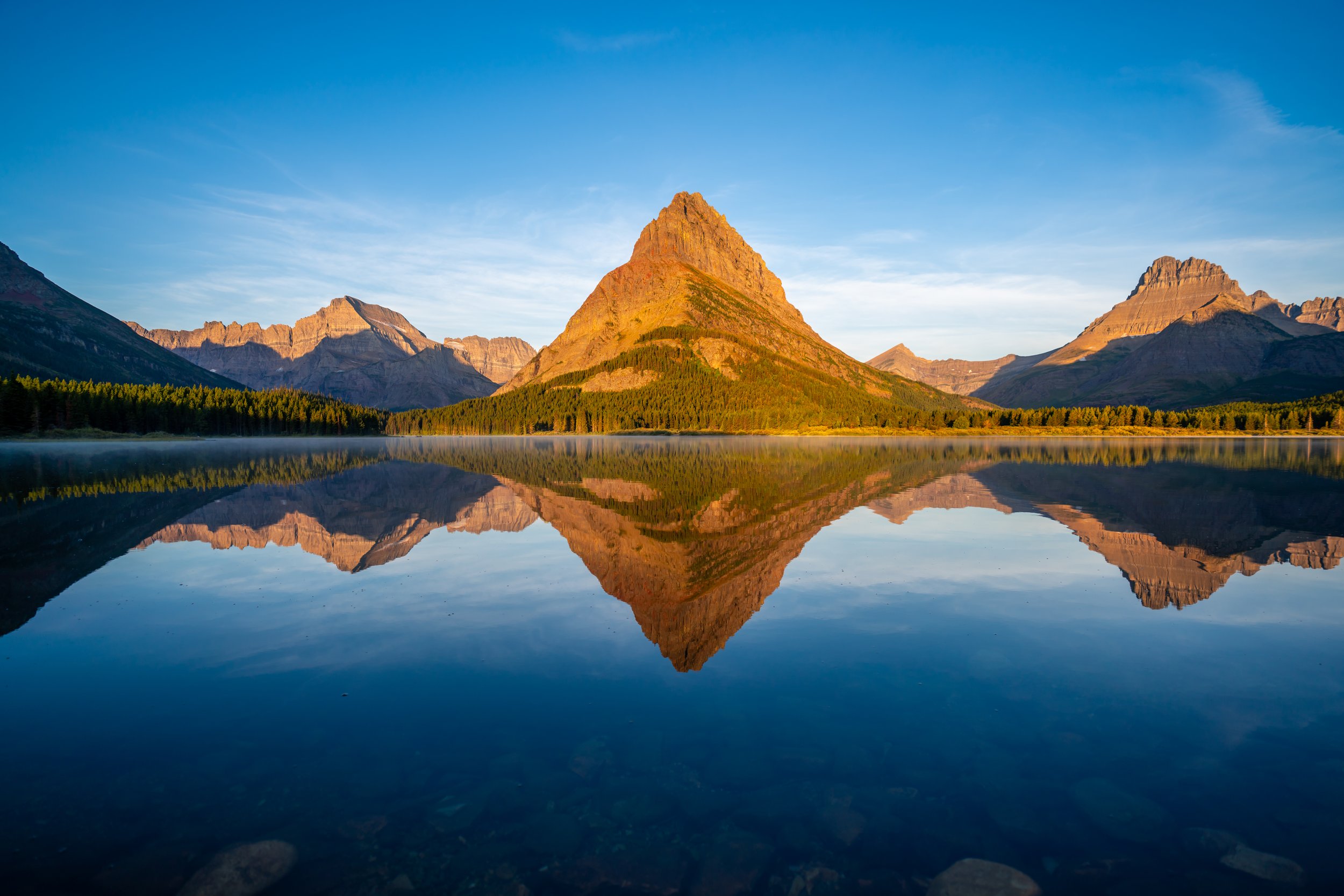30 Best Backcountry Gear Essentials: Updated 2025
This post is not sponsored.
That being said, these are the gear items that I love and trust for my own outdoor adventures!
The following list is intended to cover most areas of hiking/ backpacking gear, providing not only quality but also cheaper alternatives than some of the more expensive name-brand gear that can be found at stores, like REI and Backcountry.
However, there are some items where it’s hard to go with the cheaper alternatives, such as a tent or a sleeping bag. On the other hand, there are others, like a backpacking stove, where I find that the cheaper alternative is the better option.
What is My Outdoor Experience?
From the easiest of day hikes to the top of North America, my experience for these recommendations is coming from countless years of hiking, backpacking, and mountaineering in all types of environments around the world.
I would never recommend anything that I don’t personally use.
1. Three-Season Backpacking Tents
When it comes to backpacking tents, there are generally two main competitors that stand alone from the rest: the Big Agnes Copper Spur and the MSR Hubba Hubba.
Therefore, since comparing these two tents is beyond this post, I’ve written a separate article where I break down the major differences between the Big Agnes Copper Spur and the MSR Hubba Hubba.
That being said, whichever tent you decide on, I recommend traveling/ hiking around with it in an REI Durable Stuff Sack. Original tent bags are never good protection for such an expensive piece of gear.
Read My Separate Post: Big Agnes Copper Spur vs. MSR Hubba Hubba
2. Backcountry Sleeping Pad
At all costs, avoid an inflatable sleeping pad that feels like an inflatable mattress or an inner tube—the kind where one rock puncture is the end of it. Sleeping pads like this will get a hole and leave you spending more money than if you had just bought a closed-cell type.
I’ve had my closed-cell type by Therm-a-Rest for many years without any issues, and while this is one of those items that might seem like more money upfront, it’s a money saver in the long run!
Additionally, the Z Lite Original by Therm-a-Rest is another favorite among backpackers because you don’t have to blow it up. Personally, I don’t prefer it because it’s too big to put on the inside of my bag, so the only option is to strap it to the outside. However, this doesn’t work for me because I typically strap my tent to the bottom of my backpack.
3. Ultralight Camping Pillow
Why I Never Recommend an Inflatable Camping Pillow?
The same as previously mentioned for the sleeping pad goes for the pillow. Don’t buy an ultralight, smaller-than-your-fist inflatable pillow. They will puncture, leaving you to spend more money in the long run.
In my opinion, the small size is just a marketing technique because, from what I have seen, individuals who use such small pillows often find their heads on the ground by morning. This is especially true when camping in colder conditions, as the pillow goes soft with the temperature.
The last reason why I don’t recommend an inflatable pillow is that they are simply not as comfortable, meaning that your quality of sleep is likely to be much worse than the type of pillow I am recommending below.
The Best Ultralight Camping Pillow
The best type of camping pillow is a non-inflatable type, like this one from Therm-a-Rest. Yes, it’s bigger overall, but for the reasons that I just mentioned, any other pillow type is not worth it.
This is all to say, I recommend one that is at least 16 inches (41 cm) the long way because any bigger is too big for backpacking, and any smaller is too small for comfort.
4. Ultralight Backpacking Stove (Jetboil)
I put Jetboil in the title so that you would know what I am talking about, but, in my opinion, Jetboil is the brand to avoid.
On the other hand, the little pocket rocket stove is exactly what I’ve been using for many years, and it’s by far lighter, cheaper, and less bulky than a Jetboil.
However, you will need to carry a lighter or matches to start this kind of stove, but I believe that you should always be carrying them just incase your stove with a starter fails.
Additionally, in recent years, a relatively new device came out that allows for the easy transfer of fuel between canisters, eliminating the need to carry half-full or nearly empty canisters into the backcountry. This amazing invention is something I now swear by, and I highly recommend picking one up—whether you’re new to backpacking or have been doing it for a lifetime!
5. Ultralight Titanium Boiling Pot
To go with the stove, the Toaks titanium pots below are exactly what you need.
I’ve been using the 550 ml, which works great when boiled mostly full for a bowl of instant ramen or half for oatmeal, and the other half for coffee. However, for more than one person, consider one of the larger sizes by the same brand.
For context, the 550 ml pot will fit the stove listed above, 2 lighters, and matches inside of it when you pack it away.
6. Hiking & Trail Running Shoes
When it comes to the subject of hiking/ backpacking shoes, everyone has a different opinion about what is the best choice for climate, support, durability, etc.
For this reason, I don’t intend to go too deep into this subject, but what I can say is that Keen hiking shoes have become my go-to for times when I’m hiking somewhere that requires more durability, and HOKA Zinal Trail-Running Shoes are my go-to for lighter, less intense trails.
I used to use Merrell Moab hiking shoes, but over many different pairs, I found that they do not hold up very well in the long term. That’s why I switched to Keen, and I've enjoyed the Targhee low-cut hiking shoe across countless environments for many years since making the switch.
7. Heel Protectors (Blister Prevention)
If you are someone that is prone to hiking blisters, I could not recommend these cheap heel protectors more highly!
Although hiking is not what they are intended for, I’ve been happily using them for many years in all environments to prevent blisters.
8. Sleeping Bag & Compression Sack
For a sleeping bag that will last for many years, you need to spend some money. Don’t try to be cheap here.
That being said, buying a sleeping bag obviously depends on the season you will be camping in, but for the sake of this article, I use a 20° bag, which is a perfect three-season rating, which obviously doesn’t include winter conditions.
Furthermore, a 15-20° bag is a good universal sleeping bag, even if you expect the conditions to be much warmer. I say this because you can always unzip the bag, just sleep on it, or put it over you.
My point is that a bag rated for colder conditions will serve you in much more scenarios than one with a higher temperature rating. Take note that on REI under sleeping bags, the temperature rating for 20 - 39° has the most options for this exact reason.
In any case, a sleeping bag is very much a custom fit/ need item. Therefore, I’m going to link a few of the better bags on the market right now, along with my own personal suggestions for brands and things to consider when making a decision.
First, I’ve been using a Sierra Designs bag since I started backpacking, which has been working great for many years. Additionally, Feathered Friends is another great option for three-season sleeping bags that typically aren’t sold at REI.
On a separate note, know that the bag you choose should ideally weigh no more than 3 lbs, preferably a bit less. I also highly recommend getting a 14L Sea to Summit compression sack to help save space in your bag when backpacking, which will, at the same time, keep your sleeping bag dry—something that can’t be overstated for down-filled sleeping bags.
9. Most Universal Backpacking Bag
A backpack, like a sleeping bag, is a very personal item that can vary from person to person. I have used both Gregory and Osprey packs, and by far, my favorite brand is Gregory.
Why is Gregory the Best Backpacking Bag?
The Gregory Baltoro is my top-rated backpacking pack over of any other brand or style for a number of reasons.
First, the hip belt is the most natural of any comparable pack because it moves with your movements as you walk.
Second, the Gregory Baltoro has an abundance of pocket space for quick-access items such as a rain jacket, rain fly, headlamp, or even snow tools on the outside.
Finally, they range from 65L - 85L, which is a bit bigger in internal capacity than other brands. I like this because I always recommend a bigger storage capacity than you may plan on using, given that you don’t necessarily have to pack it full.
For my first years of backpacking, I used the 65L, and I would always barely get by on space when I packed my camera gear. Today, I use the 85L to be more comfortable with how I pack things.
In any case, if you’re the one in the group that tends to carry more group items like the tent, stove, etc., then at the least, consider getting the 75L.
10. Backpack Rain Cover
Surprisingly, not all backpack brands include rainflies with each pack.
If you’re ever in this situation or you have one that’s damaged, I recommend against buying one from the original backpack manufacturer. They are typically overpriced, and the rainflies that I have linked below cover a variety of sizes for a fraction of what major backpacking brands charge.
11. Ultralight Headlamp
When it comes to a good headlamp, many people have different opinions regarding the weight, whether it uses batteries, if it is rechargeable, etc.
With that in mind, I personally prioritize its weight and how long it is rated to last, which is exactly why I love the newly redesigned Black Diamond Storm!
For many years, I used the old, heavy version of the Black Diamond Storm, and I would not have recommended it here. However, since its redesign to make it lighter, more efficient, and longer-lasting, the Storm has since become the best headlamp on the market and my number one pick, which can be found in both traditional and rechargeable options!
12. Fishing Gear
Backcountry fishing can either be very light, like a backpacking trip to an alpine lake in the mountain west, or as heavy as a canoe trip, like in Voyageurs National Park.
Therefore, you’ll have to decide how much gear you want to bring, depending on your situation. However, this is exactly what I use, outside of a pole and tackle.
13. Water Bladder
The best hiking water bladder on the market is, by far, the Osprey 3L Hydraulics Reservoir!
In my opinion, there is nothing else that comes close to this Osprey bladder because the slide-on, slide-off top-filling feature is better than any other bladder where you need to unscrew it on the side to fill it.
Furthermore, just like a backpack, you do not have to fill a water bladder full for every adventure. However, I recommend giving yourself the option to fill it full, as opposed to choosing one of the smaller options.
Additionally, if you happen to need one new part for the Osprey water bladder, the parts are easily interchangeable. For example, I’ve needed to replace my bite valve more than once, which is cheap and easy to do without having to buy a whole new setup.
14. Hiking Daypacks
There’s a ton of options when it comes to daypacks, but sometimes, simpler is better, which is why I love recommending Cotopaxi!
Their one-of-a-kind daypacks work great for almost any adventure, and the best part is that all of the packs below can comfortably fit the Osprey 3L Water Bladder shown above.
The first and cheapest option below is quite literally barebones basic pack, but it works great for carrying just what you need and nothing more. That being said, the one thing I don’t like about the Del Dia 24L compared to the Inca 26L is that any larger items that you bring will all be packed into the one main compartment. This can make getting that one item out a little tougher, which is why my all-around favorite is the Inca 26L.
I say this because Cotopaxi thought of everything that the Luzon was missing and included it in the Inca 26L. The compartments are better, the outer loops are better, and most importantly, the hip belt is better! That is why the Inca 26L is the best all-around daypack if you’re not carrying significant camera gear.
Finally, the last option on the list is my go-to daypack for camera gear. It has been my workhorse for many years, carrying three lenses and a camera body on almost every hike that I do. On top of this, the pack also has the capacity to hold the Osprey 3L water bladder mentioned above.
15. Cathole/ Backcountry Shovel
This Ultralight Trowel is just what you need, and nothing more!
It’s tiny, lightweight, and anything bigger isn’t necessary. I have a size #2, which is long enough to do what you need to with it.
On a different note, in some backcountry areas, like Coyote Gulch and Mt. Whitney, all human waste is required to be packed out with one of the bags below. Therefore, plan on one bag for every night that you will be in a place like this because having to reuse a bag twice is never a good idea.
16. Hiking Bowl, Eating Utensils, & Food
What is the Best Camping Bowl?
A good backpacking bowl should serve as a universal eating vessel for whatever you decide to bring.
Personally, I recommend having a good bowl to stay away from instant freeze-dried meals, like Mountain House. Especially because a one-time purchase for a quality backpacking bowl saves a lot of money over continuously purchasing freeze-dried food, which seems to get more and more expensive every year.
It’s because of this that I recommend the two Sea to Summit bowls below. They are both the best ultralight and compact backpacking bowls on the market, which is especially true because the X-Bowl collapses when it’s time to pack it away!
What is the Best Camping Food That’s NOT Freeze-dried Meals?
Packet oatmeal, ramen/ pho, and instant potatoes are by far better camping alternatives than freeze-dried meals.
Personally, my favorite backcountry camping food is Mama Pho over ramen, which I always repackage before taking it into the backcountry. I say this because I think it tastes much better than instant ramen, as the chicken flavor is truly comfort food when you’re in the backcountry!
That being said, I can typically find it in Walmarts where I live in Hawaiʻi, but on the mainland, I’ve never seen it, so you’ll want to order it online.
What are the Best Camping Utensils?
For utensils, I wouldn’t recommend anything more elaborate than the easy-to-find UCO Sporks linked below.
However, if you want one with a knife, perhaps the UCO set may be a better choice.
17. Bear Bag & Canister
Personally, I try to stick to a bear bag if I know I’ll be camping below tree line because I find that bear canisters take up too much space in my bag, even when I pack things in them.
On top of this, there’s also more room in a good-sized bag for everyone’s food in your group, whereas in a bear canister, it’s difficult to fit even two people’s food for more than two nights in the backcountry.
Furthermore, I recommend making your own bear bag, instead of buying something more expensive. Personally, I do this with a 30L REI Durable Stuff Sack, and a 50 ft. (15.2 m) Utility Cord.
How to Tie and Throw a Bear Bag?
Watch this video by REI to learn how to hang a bear bag, and notice how these exact products that I’m recommending are being used.
This is also the exact setup that you will need to prevent squirrels from chewing through your tent in places like Zion or Havasupai, or marmots in the mountain west.
18. Bear Spray
If you forget to buy bear spray ahead of your hike, know it can be overpriced in local small-town stores near where you might need it.
This is especially true within or just outside of National Parks, such as Yellowstone, the Tetons, or Glacier. On top of this, renting is an even worse financial decision, granted that you would be doing more than just one-day hike in any location.
For this reason, I recommend planning ahead with at least one, for every two people in your group. Some may say one for every person, but honestly speaking, not everyone is responsible enough to react properly in the event of a bear encounter. I speak from personal experience.
Therefore, it should be given it to the people in your group that will remain calm and do everything your supposed to do without overreacting.
19. Midweight Base Layers
Whether you’re out for a cool day hike in the Pacific Northwest, waking up to a chilly morning in the Rockies, or climbing a high-altitude glacial peak, these base layers below have been my go-to for many years.
I say this not only because they are cheaper than other brands, but the quarter zippers help regulate heat during times when you’re moving and help keep you warm during times when you’re not.
20. Mosquito Net
In some backcountry areas throughout Wyoming, Idaho, Washington, and others, the mosquitoes or biting flies can be unbearable by mid-summer. Being the case, I recommend carrying this cheap mosquito net because of how light and effective it is to have on your person.
In my experience, it is especially useful at times when it’s necessary to be out of the tent in the evening, such as cooking or hanging a bear bag.
21. Rain Jacket/ Shell
I’ve learned over the years that a rain shell is far better than a rain jacket. By this, I mean that it’s best to have something that the water will roll right off of, which is why I recommend the Patagonia Torrentshell 3L.
Furthermore, I also believe that Patagonia is the best and cheapest alternative to anything more expensive by Arc'teryx.
22. Backcountry Water Filter
This is a gear item that many backcountry enthusiasts would debate about.
Personally, I’ve had trouble with MSR pump filters in the past, which is why I recommend the filter below by Katadyn, as it has been great to me for many years.
However, for other situations when you think that filtering water may not be enough, I recommend carrying the purification tablets below.
Finally, if you’re looking for a grab-and-go method, the LifeStraw Water Filter Bottle is the go-to choice! From personal experience, it has worked great for me, and it is as easy as dipping it into a lake or stream and drinking, making this bottle the fastest purification method on this list!
23. Micro-spikes
Micro-spikes can receive a lot of criticism for notoriously accelerating erosion in soft-soil landscapes, like Oʻahu or the Oregon Coast, but they absolutely have a time and a place, most notably when hiking over snow and ice.
Therefore, depending on factors such as the previous winter’s snowpack, elevation, latitude, and shade, snow and ice can persist on certain trails from early June through much of August in some upper-elevation ranges. Micro-spikes are especially needed when melting during the day and freezing at night creates hazardous, icy conditions by morning, such as the spring snowmelt on the Angels Landing Trail, or even summer snowmelt on the Grinnell Glacier Trail.
That being said, be aware that micro-spikes are never a substitute for situations where crampons are appropriate. However, during spring and summer conditions, like I just described, micro-spikes are more suitable outside of glaciated areas, such as Gannett Peak.
I personally use the Yaktrax below.
24. Hiking Pants
When it comes to the hiking pants I recommend, it all depends on the environment.
What I mean is that for most trails where overgrowth is not an issue, I prefer wearing prAnas for a variety of reasons, including comfort, durability, and how well they repel water/ dry after getting wet.
However, when overgrowth needs to be considered, which is true for the trails where I live on Oʻahu, I prefer to wear pants that are at or near 100% nylon. This is vital in terms of long-term durability and prevents the fabric from tearing on the plants.
25. Trekking Poles
In terms of trekking poles, there are essentially two types to consider, which entirely depends on whether you’ll be hiking in snow or not.
For most situations, the first set of trail trekking poles is exactly what I use and recommend for both day hikes and long backcountry adventures. I recommend Black Diamond because they do such a great job with overall durability, weight, and comfort.
The same can be said about the alpine poles for snowy environments, such as Colorado or elsewhere, but the main difference is the ability to add snow baskets in order to mitigate postholing in conditions with deep snow.
For this reason, it’s best to make your selection dependent on what type of environment you see yourself getting the most use out of them.
26. Climbing Helmets
There are some adventures that you just shouldn’t do without a helmet.
Therefore, for those times when you’ll be scrambling or climbing, I recommend the helmets by Black Diamond below. They are both light enough to clip securely to the outside of your bag as you hike, and this style is perfect for most routes that require it across the mountain west.
A good example is Capitol Peak in the Elk Mountains of Colorado.
27. Sun Hat
When it comes to a sun hat, something simple that will easily fold into your bag or pocket is all you need.
Personally, I’ve been using the ones below for many years, especially on trails when shade is minimal or at times when I’m out fishing all day in the sun.
28. Sun Shirts
While a sun shirt can certainly be an old polyester shirt from the thrift store, there is something better about the sun shirts made by Quicksilver and Columbia.
By this, I mean that since being gifted some of these shirts, I will never go back to any old cheap sun shirt.
From the fit to the quality and how long they have lasted me, I recommend spending the extra money—especially if you want a good-quality shirt to wear for days on end in the backcountry.
29. Ultralight Hammock
Whether you’re looking for a hammock to use at a drive-up campsite or deep in the backcountry of the White Cloud Mountain Range, there’s truly only one brand that I think is worth considering: Eagles Nest Outfitters.
Eagles Nest Outfitters, or ENO for short, has been making the best lightweight, compact, all-in-one hammocks for many years.
However, the one downside with ENO, along with other brands, is that straps are always sold separately. That being said, these hammocks and straps are meant to last for many years, which is backed by their consumer-friendly warranty should a defect occur.
30. Backcountry Games
For multi-day trips in the backcountry, the obvious choice is a deck of cards; however, a less obvious but perhaps more enjoyable option is my favorite game called Farkel, or more specifically, 'Pocket Farkel.'
If you have never played, Farkel is a fun game where, each turn, the player rolling gets to gamble their points to try and reach the winning score of 10,000. It’s truly a great backpacking game because it’s easy to learn, and it’s lighter than a deck of cards!
Summary
All in all, I did not make too many recommendations in regards to clothing because I feel that those items are very personalized, and my recommendations wouldn’t be as universal as the ones I talked about above.
However, if you would like to see me talk about something that I didn’t mention, please leave a comment below!
Disclaimer
All information provided on this blog is for informational purposes only and is not intended to be a substitute for information or advice from qualified professionals or managing agencies.
Noah Lang Photography LLC makes no representations or warranties regarding the accuracy or completeness of the information provided here, and readers should use their own discretion, judgement, and seek professional advice where it is appropriate.
Furthermore, Noah Lang Photography LLC shall not be held responsible for any injuries, lost individuals, or legal issues arising from the use of information provided on this website, and if applicable, the above safety disclaimer should be referenced to provide a generic overview of the risks involved.
All said, the content on this blog is for the sole use of Noah Lang Photography LLC, and unauthorized use or reproduction of this content is strictly prohibited.
Disclosure
This post is not sponsored.
However, some of the links in this post are affiliate links, which means that I may earn a small commission if a purchase is made through one of those links. This commission comes at no additional cost to you, and I only recommend products that I personally use and believe will add value to my readers. Thank you for your support, which enables me to continue creating more!
To read the full privacy policy, click here.

About This Blog
Noah Lang Photography, also known as @noahawaii, is 100% reader-supported!
I do not accept guest articles or sponsored content of any kind on my blog, which is why, if you enjoy the outdoor and travel content I create, please consider buying me a coffee!
I appreciate your support, which helps me continue to keep this blog alive!






